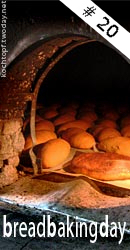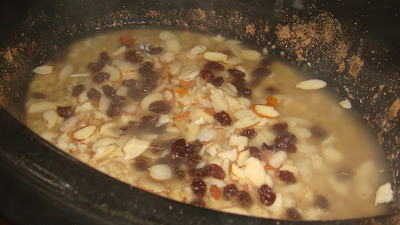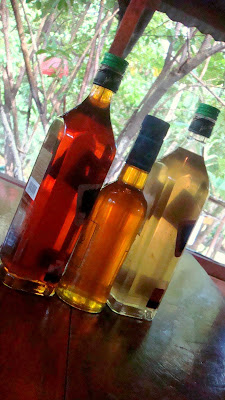Banoffee Pie
The first thing I wanted to do with these incredibly perfect bananas was to try a new dessert. There must be a zillion dessert recipes that you can make with bananas, but a couple of months ago a recipe for Banoffee Pie caught my attention. I had never heard of it before, so had to google it to get some background.
(from Wikipedia)
Banoffee pie (also spelled banoffi, or banoffy) is an English dessert made from bananas, cream and boiled condensed milk (or dulce de leche), either on a pastry base or one made from crumbled biscuits and butter. Its name is a portmanteau constructed from the words "banana" and "toffee".
Credit for the pie's invention is popularly claimed by Ian Dowding and Nigel Mackenzie of The Hungry Monk restaurant in Jevington, East Sussex. They claim to have invented the pie in 1972, and the restaurant's exterior bears a blue plaque to that effect. The dish, with various stories of its source, spread, and in 1994 a number of supermarkets began selling it as an American pie, leading Dowding and Mackenzie to offer a £10,000 prize to anyone who could disprove their claim.[1]
The recipe was originally revealed in 'The Deeper Secrets of the Hungry Monk' in 1974 (now out of print). The recipe was reprinted in the Hungry Monk's later cookbook 'In Heaven with the Hungry Monk' (1997). Ian Dowding has since put his original recipe online because he is "pedantic about the correct version", and stated that his "pet hates are biscuit crumb bases and that horrible cream in aerosols".
My version is not exactly like the original version because I have used a crumb crust instead of a pastry crust.
Banoffee Pie
Ingredients

1 can of sweetened condensed milk
1 prepared pie crust
1.5 to 2 pounds of bananas
3/4 pint of heavy cream
1 tsp sugar
1 tsp instant coffee
Instructions
1. Make the toffee by boiling the unopened can of sweetened condensed milk in water to cover the can. (the best instructions I have found for doing this are copied below from the Ian Dowding website).
2. Whip the cream with 1 tsp. of sugar and 1/2 tsp. instant coffee.

3. Spread "toffee-ized" can of sweetened condensed milk over the base of the pie.

4. Cut bananas in half lengthwise and place over the toffee layer.

5. Spread whipped cream over the banana layer and sprinkle with coffee granules and sugar.

6. Refrigerate until ready to enjoy with a cup of herbal tea.

From the Ian Dowding website About Boiling the Cans of Milk:
Over the years I have become increasingly concerned about the danger of boiling cans of condensed milk. There is no danger of them exploding unless the water in the saucepan boils dry. If this does happen the result is terrifying and can scald anyone close to it. It has happened to me once and that was enough. Because I now teach and demonstrate a lot I like to make sure my instructions are safe so I have devised this method.
Find a deep saucepan or casserole that will go in the oven.
Put into it as many tins as will fit. (THE TINS MUST BE UNOPENED). It worth doing several at a time to save on power.
Cover the tins with water and bring to the boil.
Cover with a lid and transfer to the oven set to gas mark 1 / 140 C (less for fan assisted).
Cook for 3 ½ hours.
This way there is no danger of the water boiling dry and being in a more controlled temperature you get a more consistent result.
Lift the cans from the water, cool and store.
An unusual bonus comes from storing these tins over a period. After some months sugar crystals begin to form in the toffee and you get crunchy banoffi - mmmmm.
(at http://www.iandowding.co.uk/recipes/files/a96b1884215e21687c47e5889c6243ce-6.html)































